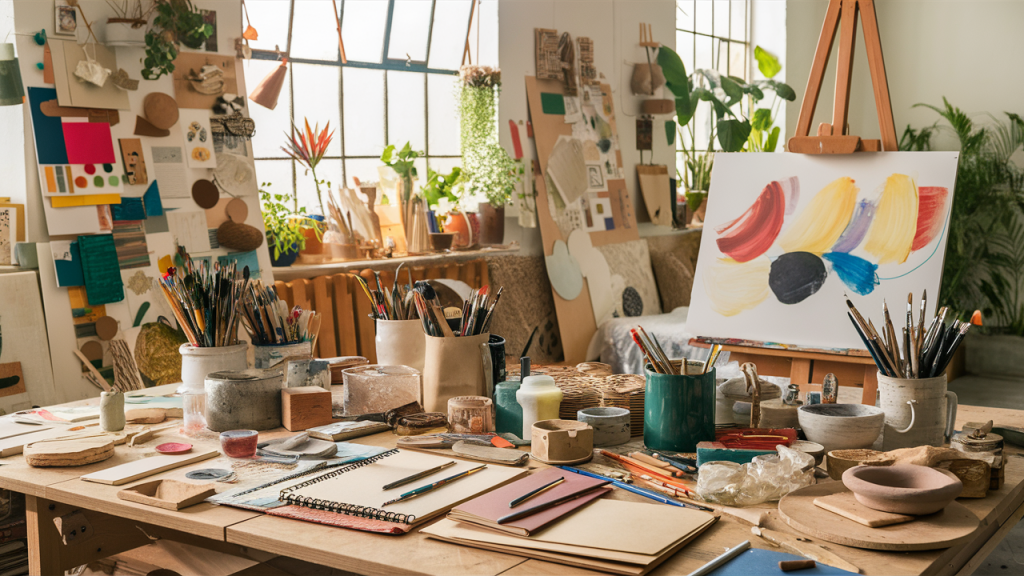Have you ever stared at a blank page or canvas, waiting for inspiration to strike? Maybe your ideas feel stuck, and nothing seems exciting.
I’ve been there too. The good news is that creativity isn’t something you either have or don’t have—it’s something you can build.
Sometimes, the best ideas don’t just appear. They come when you try new things, make mistakes, and release the pressure to be perfect.
Another thing that helps is looking at the world differently. I find inspiration in nature, music, or even everyday objects. Creativity grows when I step outside my comfort zone.
If you’ve ever wondered how to bring more creativity into your art, you’re in the right place. Keep reading to find out how.
What Does Creativity Mean?
At its core, creativity is the ability to take existing ideas and combine them in new ways.
It’s not just about making art—thinking differently, solving problems, and seeing possibilities where others don’t.
It’s what helps inventors create new technology, chefs come up with delicious recipes, and even kids build imaginative worlds with blocks.
It allows us to push beyond the ordinary and bring fresh ideas. Some people believe you must be born creative, but that’s not true.
Creativity is a skill that can be developed. The more you practice thinking outside the box, experimenting, and exploring new ideas, the more creative you become.
In art, creativity helps express emotions, tell stories, and create something unique.
How Creativity Shapes Art
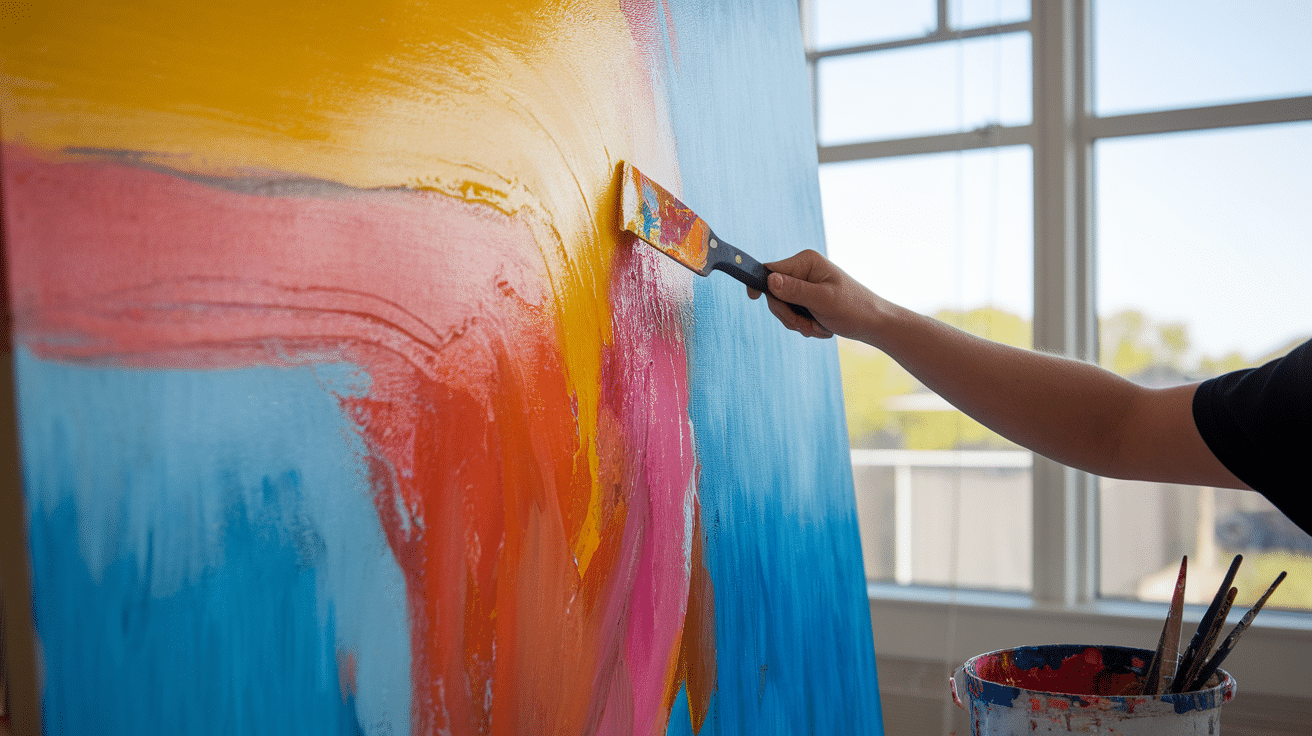
Creativity is the heart of art. It’s what makes each piece unique and gives artists their style.
Art would be repetitive without creativity, and everything would look the same. It allows artists to turn simple lines, colors, and shapes into something meaningful.
Art is more than just copying what we see—it’s about interpreting the world personally. Two people can look at the same landscape and paint it completely differently because of their creative vision.
It also means pushing boundaries. Many famous artists became known because they tried something new.
Van Gogh’s swirling brushstrokes, Picasso’s bold shapes, and Frida Kahlo’s deep symbolism all came from their willingness to explore and express themselves differently.
Even when following traditional techniques, creativity plays a role. It helps artists make choices about composition, colors, and themes.
It also allows them to experiment, take risks, and bring fresh perspectives into their work.
What is the Creative Process, and How Does It Help?
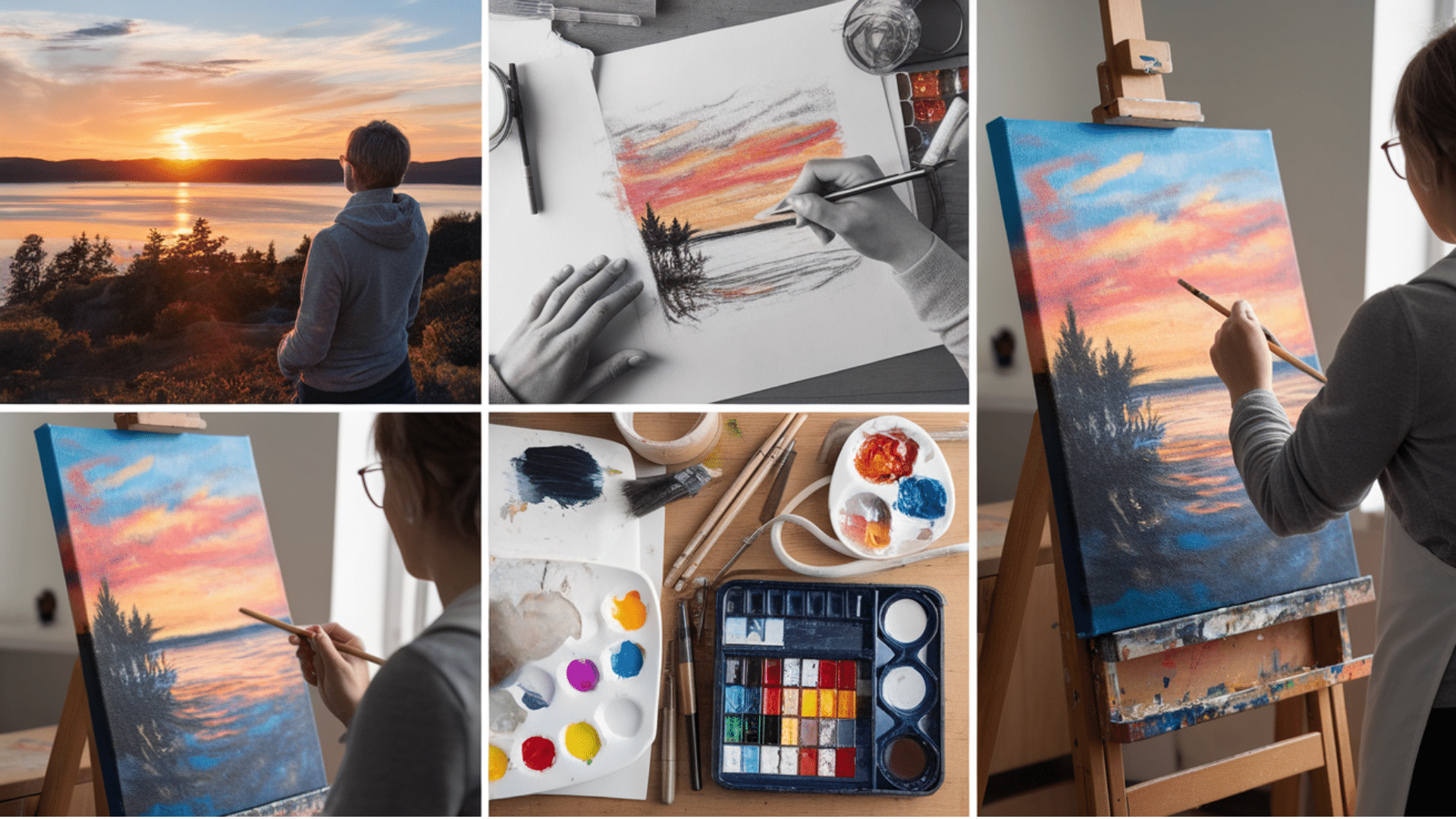
Creativity doesn’t usually happen in an instant. Most great ideas go through a process before they turn into something amazing.
Understanding the creative process can help you improve your art and make it easier to develop new ideas.
The creative process usually follows these steps:
1. Inspiration
This is the starting point—something sparks an idea. It could be something you see, a feeling, or even a random thought.
Inspiration can come from nature, music, books, memories, or daily life. Keeping a sketchbook or idea journal can help capture these moments.
2. Exploration
Once you have an idea, it’s time to experiment. This is where you play with different styles, materials, and techniques to see what works best.
Sometimes, your first idea won’t be the best, so trying different approaches can lead to something even better.
3. Development
This stage is about refining your idea. You start putting elements together, adjusting details, and making creative choices.
It’s also where mistakes happen, which can lead to unexpected and exciting results.
4. Execution
Now, it’s time to bring your vision to life. This step requires focus, patience, and problem-solving.
Sometimes, the final result looks different from the original idea, and that’s okay. Creativity often leads to unexpected outcomes.
5. Reflection
After finishing a piece, take a step back and reflect. What worked well? What could be improved? Reflection helps you learn and grow as an artist.
It also prepares you for your next creative challenge.
Following this process doesn’t mean creativity has to be rigid. It simply helps you move forward when you’re unsure what to do next.
Some artists naturally go through these steps without thinking about them, while others find it helpful to break things down.
The more you understand how creativity works, the easier it becomes to develop new ideas and bring them to life.
Easy Ways to Boost Your Creativity in Art
Creativity doesn’t always come naturally, but it can be sparked with the right approach.
If you’re feeling stuck, don’t worry—there are many ways to reignite your creative flow.
These ideas focus on trying new techniques, looking at different perspectives, and stepping outside your comfort zone.
1. Try Different Art Supplies
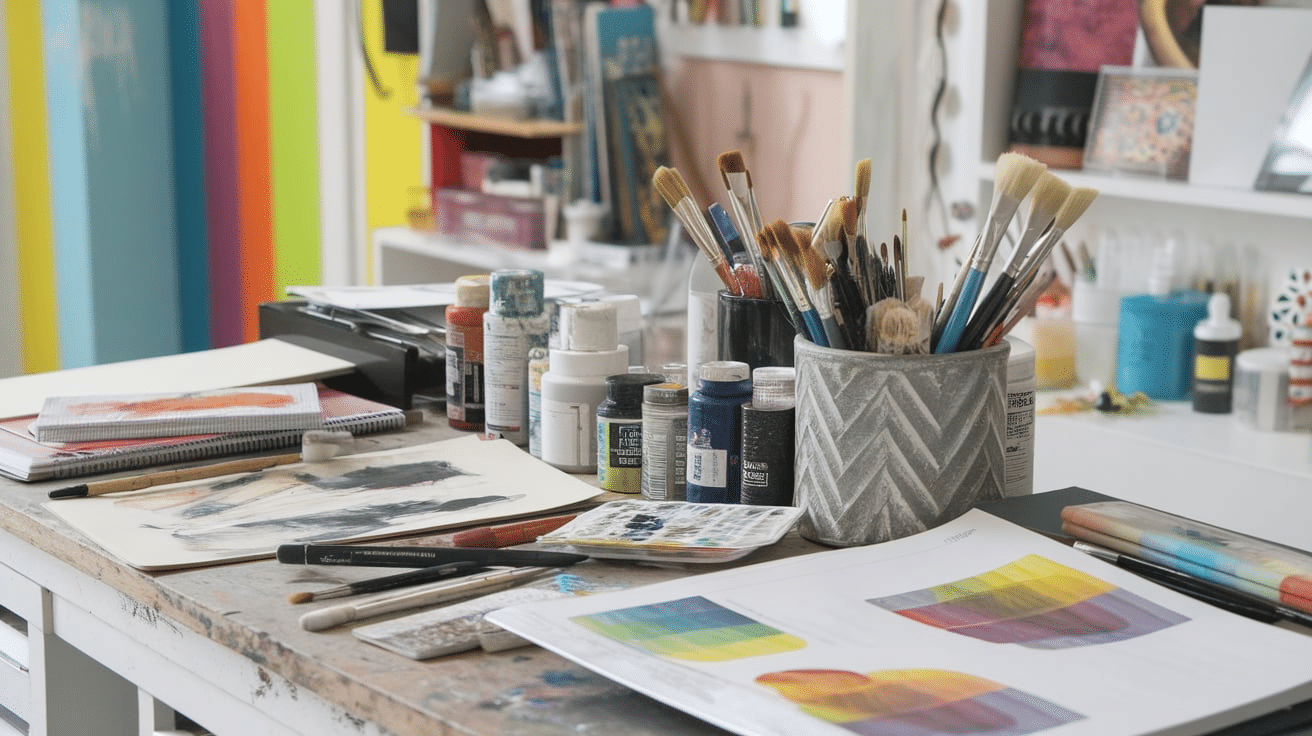
Using the same tools all the time can limit creativity. Switching things up can help you see art in a new way.
- Use Unusual Materials: Try painting with sponges, leaves, or even your fingers. Experiment with charcoal, pastels, or markers instead of pencils. Mixing different materials can lead to exciting results.
- Change Your Surface: If you always draw on paper, try painting on wood, fabric, or canvas. A new surface can change how you create and inspire fresh ideas.
- Experiment with Digital Art: If you usually create with traditional tools, try using a drawing tablet or design software. Digital art offers endless possibilities for colors, textures, and styles.
2. Change Your Environment
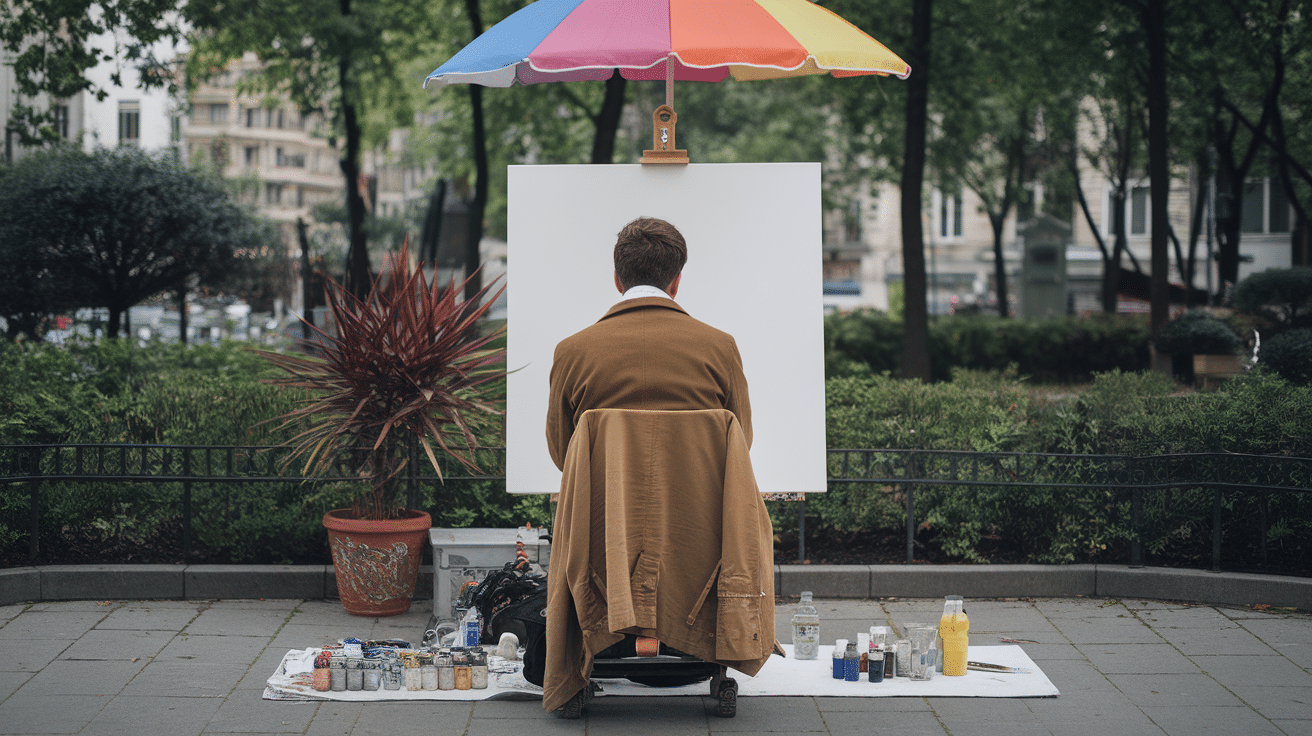
Your surroundings affect your creativity. A cluttered or dull space can make it harder to feel inspired.
- Create a Creative Space: Find a spot where you can work without distractions. Decorate it with colors, artwork, or objects that inspire you. Keep your supplies organized so you can start creating without stress.
- Go Outside for Inspiration: If you feel stuck, step outside. Nature, city streets, or even a local coffee shop can provide fresh ideas. Observe textures, colors, and patterns around you.
- Listen to Music While You Create: Music can boost creativity. Try different genres to see how they affect your mood and artwork. Some artists find instrumental music helps them focus, while others enjoy upbeat songs.
3. Try New Art Styles
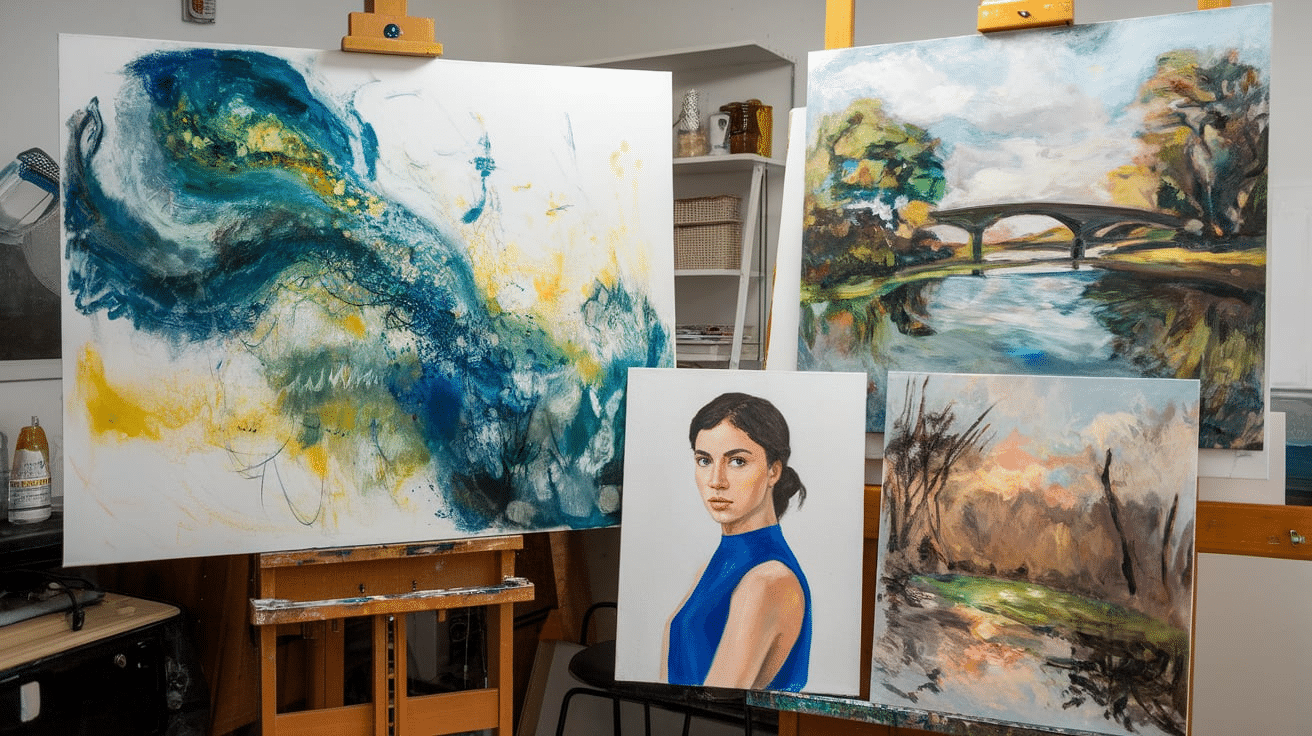
Sticking to the same style can make art feel repetitive. Exploring different styles can help you grow as an artist.
- Draw or Paint in a Different Way: If you usually create realistic art, try abstract or impressionistic styles. If you use lots of colors, experiment with black and white.
- Mimic an Artist You Admire: Studying other artists can teach you new techniques. Try recreating a famous painting or drawing in the style of an artist you love. This exercise can give you fresh ideas for your work.
- Switch Between Loose and Detailed Work: If you focus too much on small details, try making quick, loose sketches. If your art is usually free-flowing, challenge yourself with detailed work.
4. Practice Free Drawing and Painting

Sometimes, we overthink art instead of just creating. Letting go of expectations can help ideas flow.
- Doodle Without a Plan: Grab a sketchbook and start drawing random lines, shapes, or patterns. See where your imagination takes you.
- Try Timed Sketching: Set a five or ten-minute timer and draw whatever comes to mind. This keeps your brain active and helps you generate ideas without pressure.
- Paint Without a Goal: Instead of trying to make a perfect piece, focus on playing with colors and brushstrokes. Let your instincts guide you.
5. Challenge Yourself
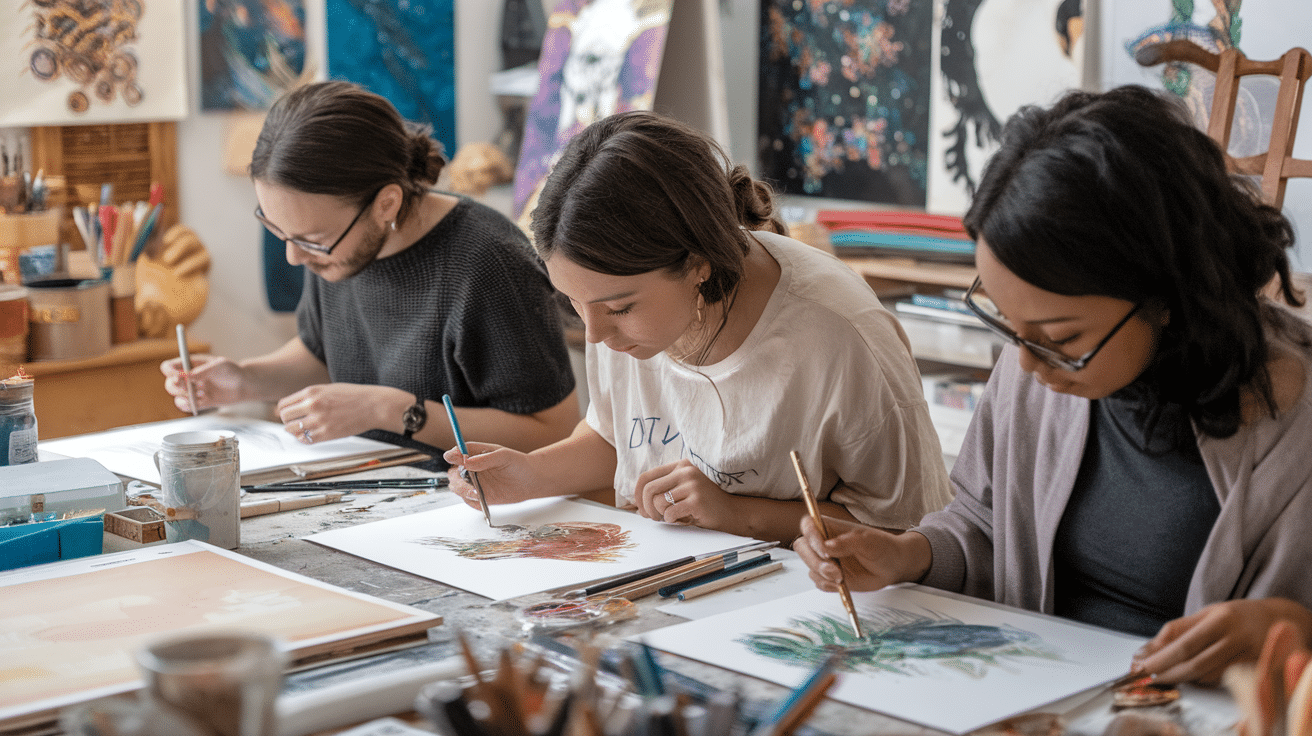
Pushing yourself out of your comfort zone can help you discover new techniques and ideas.
- Join an Art Challenge: There are many art challenges online, like Inktober or the 100-Day Project, and even in person. These challenges give daily prompts that help you think outside the box.
- Use Limited Colors: Try creating a piece using only three colors. This forces you to be creative with shading, blending, and composition.
- Draw with Your Non-Dominant Hand: This might feel awkward at first, but it can lead to interesting, unexpected results. It also helps improve hand-eye coordination.
6. Find Inspiration from Other Artists
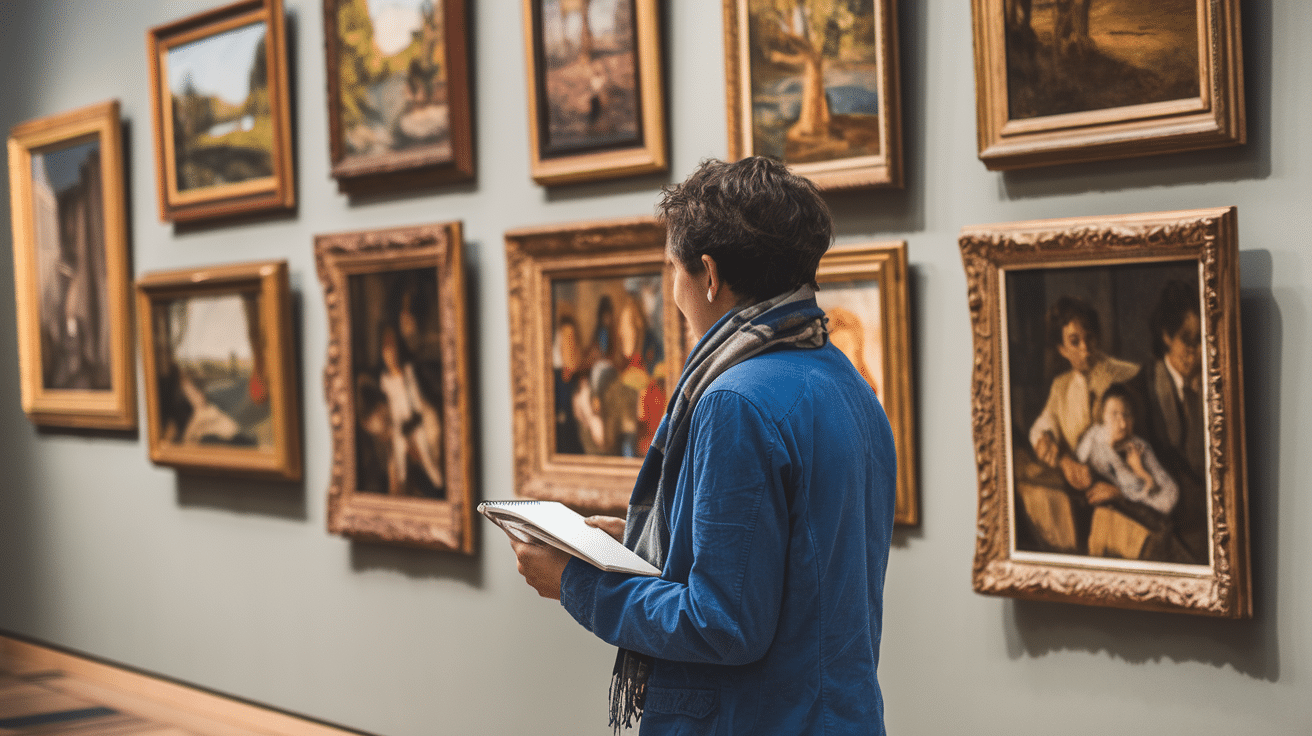
Looking at other artists’ work can help spark new ideas.
- Visit Art Galleries and Museums: Seeing art in person can be inspiring. Pay attention to the details, colors, and techniques artists use.
- Follow Artists on Social Media: Platforms like Instagram, Pinterest, and YouTube are full of amazing artwork. Watching artists share their process can give you ideas for your own work.
- Read Books About Art: Books about art history, techniques, and creativity can open your mind to new possibilities.
7. Use Your Everyday Life for Inspiration
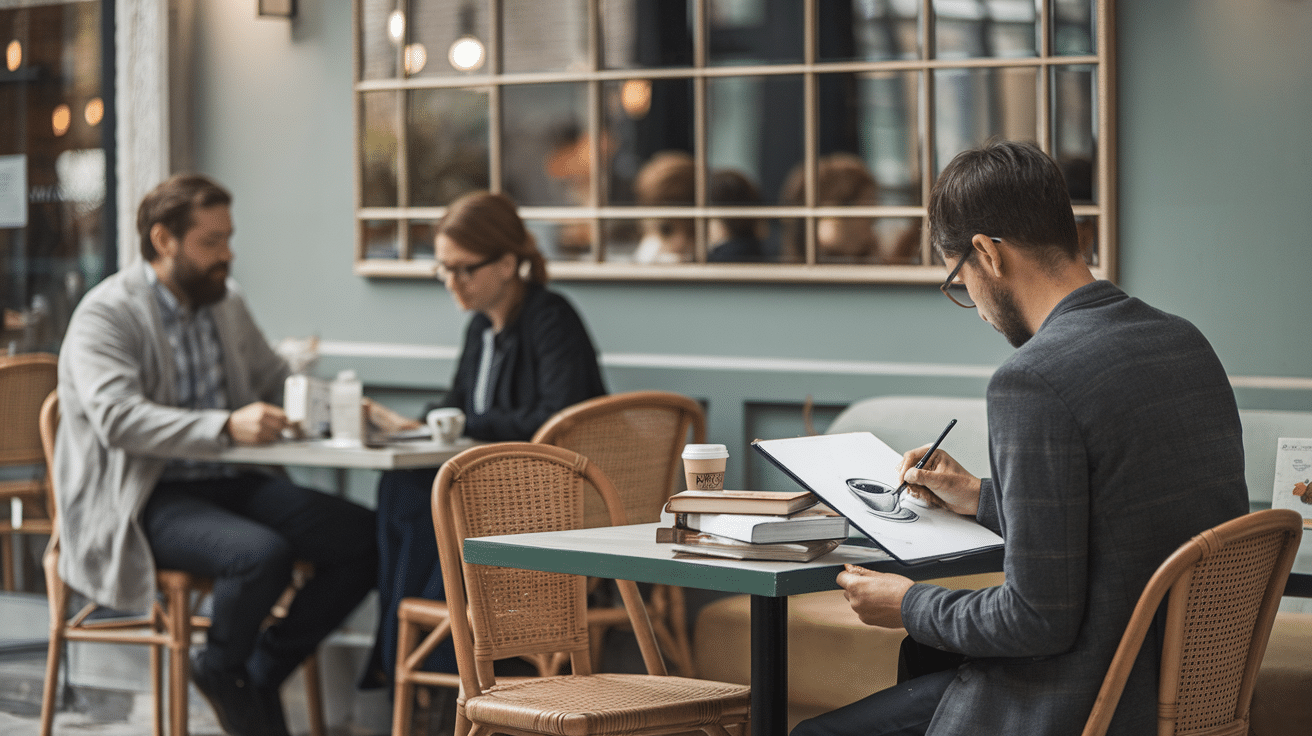
Art doesn’t always have to come from imagination. Everyday life is full of interesting things to draw or paint.
- Sketch Daily Life: Draw your coffee cup, the view from your window, or people at a park. These small sketches help you see beauty in everyday things.
- Keep a Visual Journal: Instead of writing a diary, sketch your daily thoughts and experiences. Adding colors, doodles, and notes can make it even more creative.
- Take Photos for Inspiration: If you see something interesting, take a photo and use it later as a reference for your artwork.
8. Collaborate with Other Artists
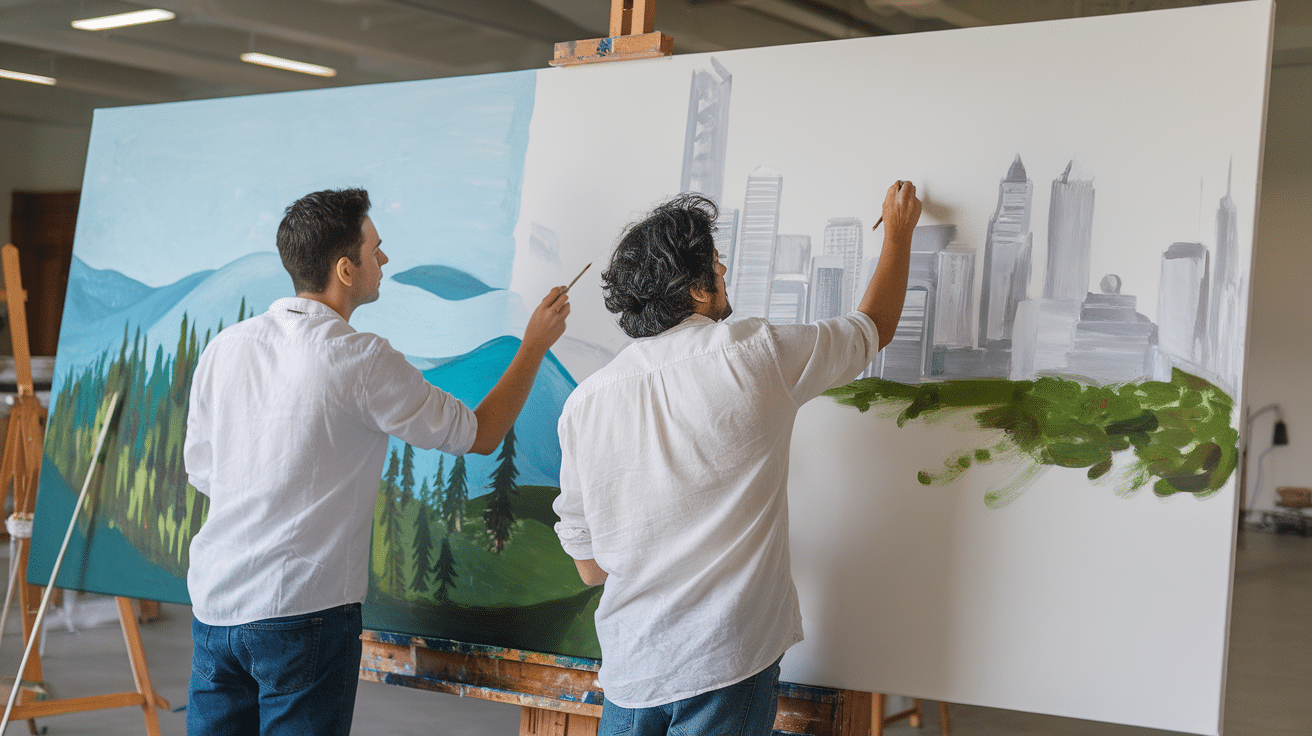
Creating with others can open up new ideas and perspectives.
- Join an Art Group: Being part of an art community helps you stay motivated and inspired. Look for local art clubs or online groups where you can share your work.
- Work on a Group Project: Try creating a piece of art with a friend. You can take turns adding to a drawing or painting to see where it goes.
- Get Feedback on Your Work: Sometimes, another artist’s perspective can help you see things differently and improve your creativity.
9. Take Breaks and Rest Your Mind
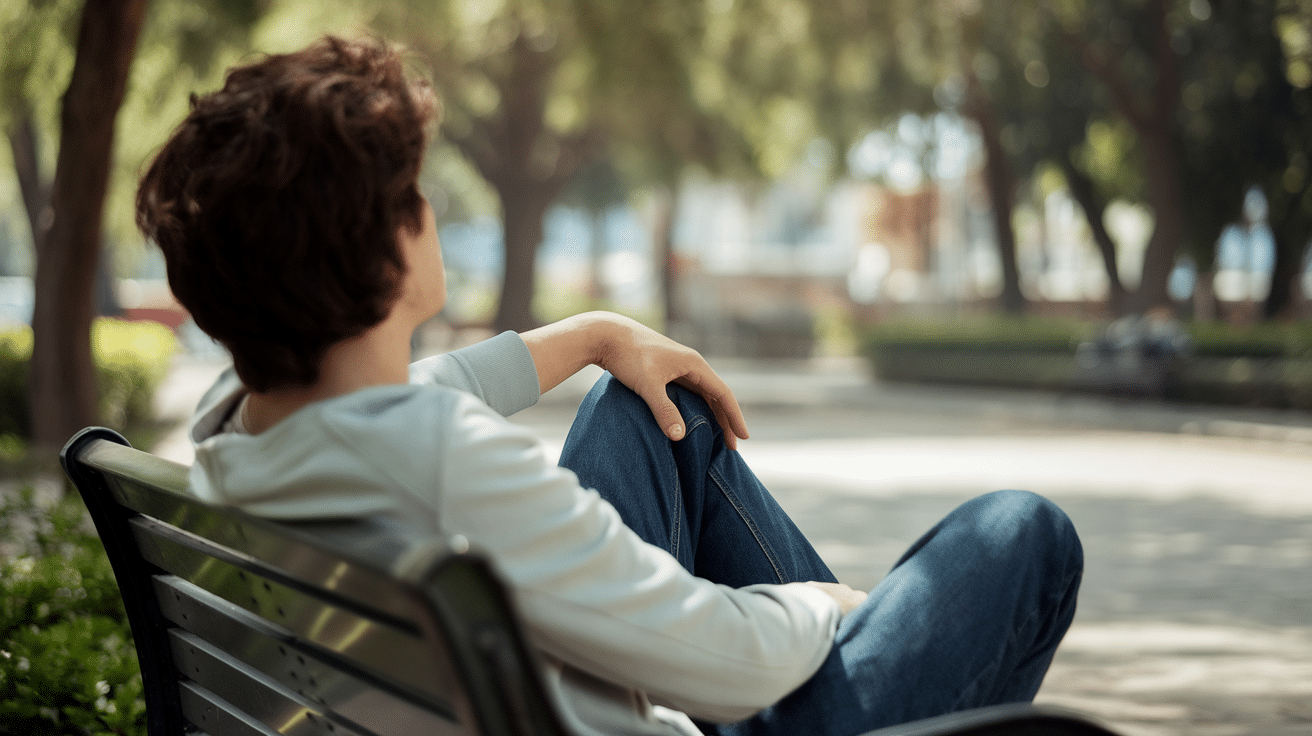
Creativity doesn’t always come from constant work. Taking breaks can help refresh your mind.
- Step Away from Your Art: If you’re feeling stuck, take a break. Come back later with fresh eyes and a new perspective.
- Try a Different Creative Activity: If you’re not feeling inspired, do something else creative, like cooking, writing, or playing music. These activities can help reset your brain.
- Get Enough Sleep and Exercise: A tired mind struggles to be creative. Getting enough rest and moving your body can improve focus and creativity.
10. Keep an Open Mind
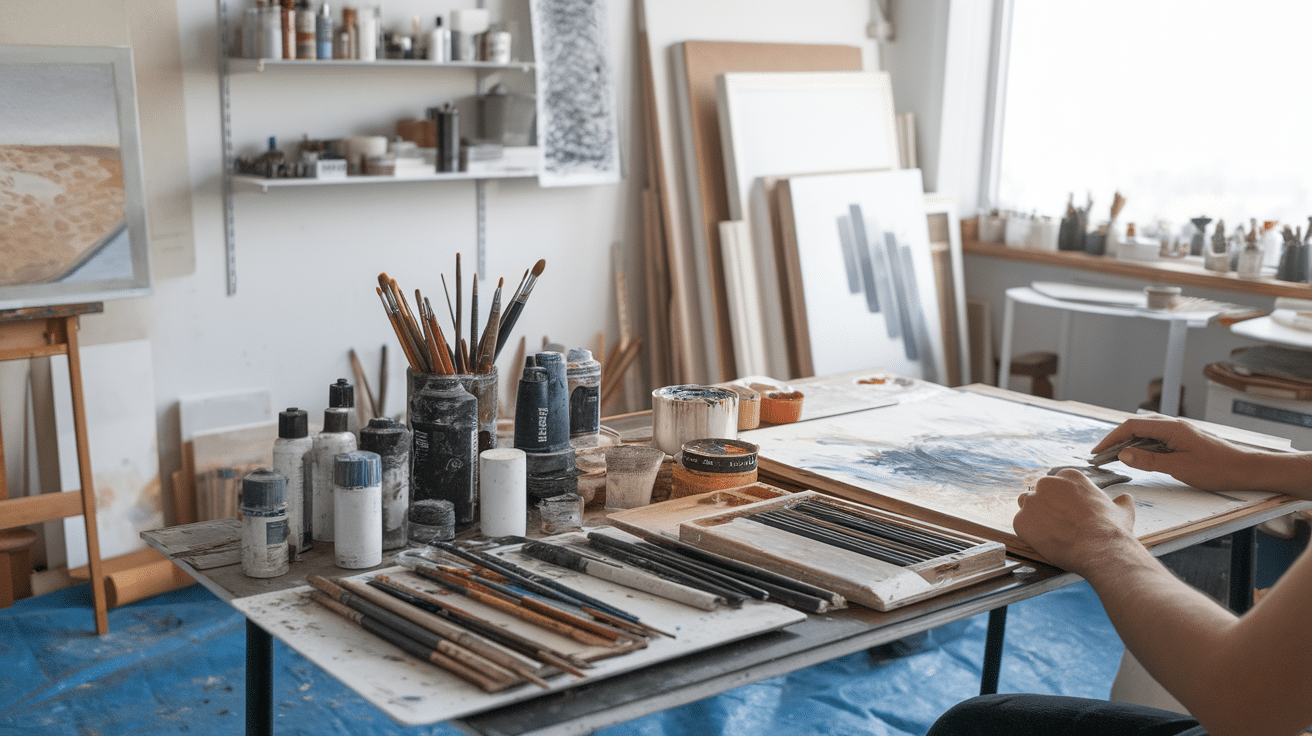
Creativity is about exploring and growing. The more open you are to new ideas, the more creative you’ll become.
- Don’t Worry About Perfection: Not every piece of art has to be perfect. Mistakes can lead to new ideas and unique results.
- Stay Curious: Ask questions, try new things, and keep learning. The more you explore, the more creative you’ll become.
- Have Fun with Your Art: Art should be enjoyable. Don’t be afraid to experiment, play, and express yourself freely.
How Focusing on the Process Improves Creativity
When it comes to art, many people focus on the end result: creating a masterpiece or producing something perfect.
However, this focus on the final product can sometimes block creativity. Instead, shifting your attention to the process—how you create and experiment—can help bring new ideas and make your artwork more authentic.
Focusing on the process allows you to enjoy creating without worrying about what the final piece will look like.
This freedom can lead to unexpected discoveries, mistakes that turn into happy accidents, and breakthroughs that wouldn’t have happened if you were only focused on achieving perfection.
This mindset not only helps improve your skills but also makes the experience of creating more enjoyable and fulfilling.
Final Thoughts
To wrap things up, creativity in art isn’t about waiting for the perfect idea to hit—it’s about the willingness to try and take chances.
Art is a journey, not a destination. The more you experiment and focus on the process of creating, the more your creativity will grow.
You don’t have to stick to the same old methods. Trying new tools, techniques, and approaches can bring fresh ideas.
And sometimes, letting go of perfection and embracing mistakes can lead to your most exciting work.
Remember, creativity isn’t a gift some have and others don’t. It’s a skill that anyone can develop with practice and patience.
So keep experimenting, stay curious, and let your art express your creativity and your journey.
The more you create, the more you’ll learn what you’re capable of.
Frequently Asked Questions
How do I know if an idea is creative?
A creative idea is one that feels fresh, exciting, and different. It might challenge the usual way of thinking or look at something familiar in a new light. Trust your instincts and let the idea guide you without worrying about making it perfect.
How do I find inspiration when I’m stuck?
Inspiration can come from anywhere. Try going for a walk, looking at other artists’ work, or even listening to music. Taking a break or trying a new art material can also spark fresh ideas.
How do I stop worrying about making mistakes in my art?
Mistakes can be a valuable part of the creative process. Instead of seeing them as failures, try to view them as opportunities to learn and experiment. Embrace the process and trust that mistakes can lead to new discoveries.


